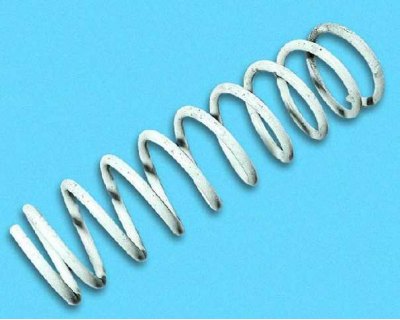- suspension spring tensioner
- body stand (Preferably height adjustable)
- key "at 19"
Rear suspension springs are replaced when broken or excessive settling, as evidenced by frequent "breakdowns" suspension to restrictive buffers.
Recommendation. If one of the suspension springs settles or breaks, replace both springs if possible to avoid body distortion.

1. Install a coupler on the spring to be replaced and slightly compress the spring. In the absence of a tie, the spring can be tied in a compressed state with a strong wire.

2. Disconnect the lower end of the shock absorber from the side of the spring to be replaced (see subsection 5.2.1 for details.), hang the rear of the car from the side of the spring to be replaced until the wheel is off the ground and place the body on a support.

3. Squeezing down the rear suspension arm within the elasticity of the silent block, remove the spring and dismantle the coupler from the spring.

4. Remove the spring insulator in the wheel arch if it remains on the body.

5. Inspect the removed spring. If the spring has deformed or cracked coils and traces of their contact are visible on the coils, replace the spring.

6. Pay attention to the paint markings on the coils of the spring. It can be yellow - normal hardness group A or green - high hardness group B. Both springs of the rear suspension of the car must be of the same hardness group.

7. Examine the insulating gasket. Replace badly deformed or hardened gasket.

8. Before installing the spring, install an insulating gasket on it so that the end of the last coil is located in the notch of the gasket, and...

9....fasten the gasket to the spring with electrical tape or scotch tape. After that, compress the spring with a coupler.

10. Install the spring in the reverse order of removal. Place the straightened end of the lower coil in the notch of the suspension arm cup.
